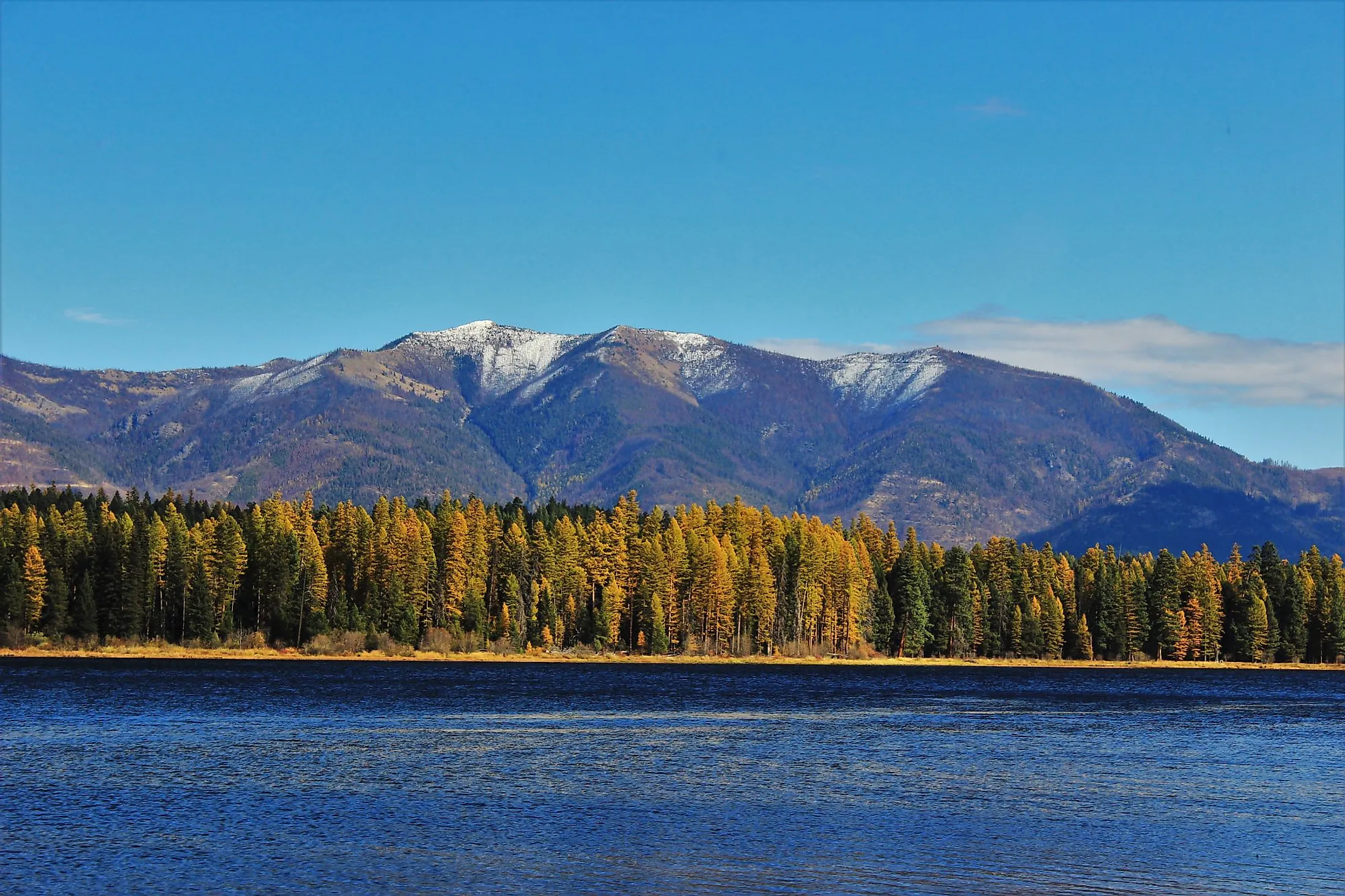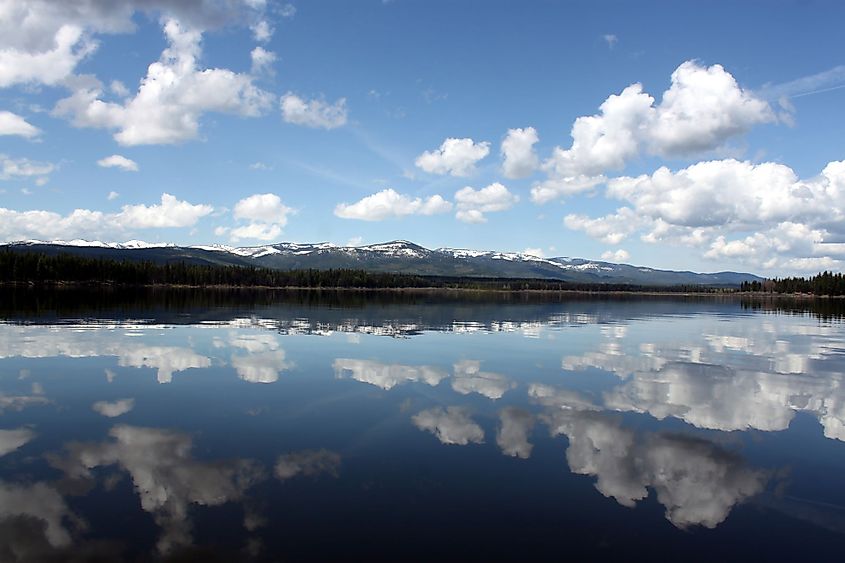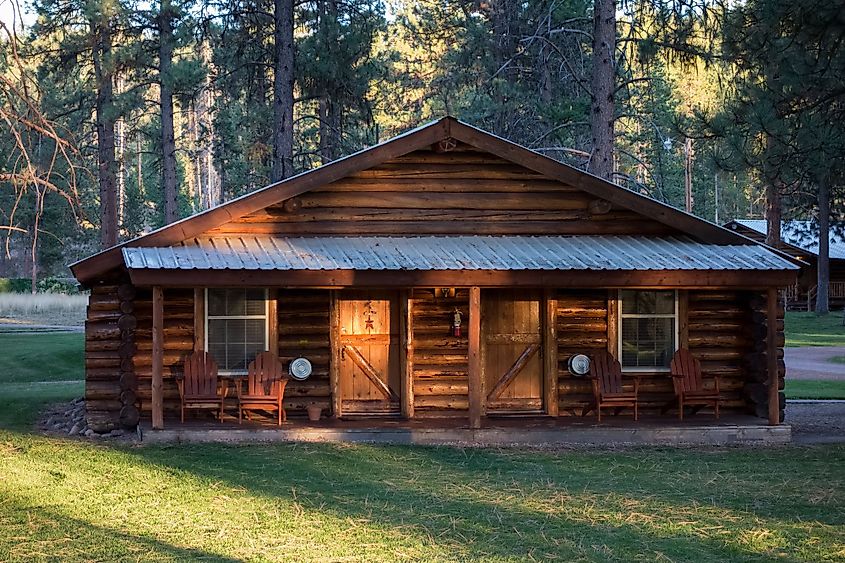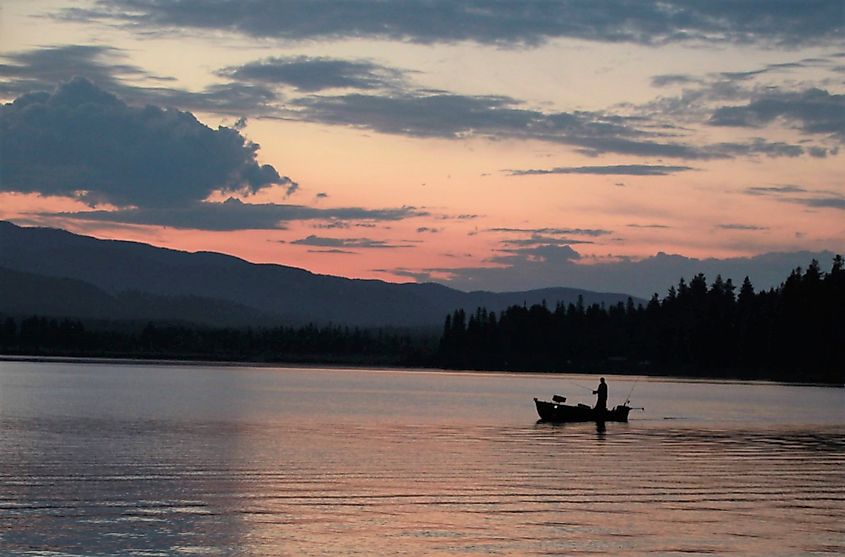
Seeley Lake, Montana
Seeley Lake is located along Highway 83, one of Montana's most picturesque routes, and is bordered by the Mission and Swan Mountain Ranges. One can enjoy birding, wildlife viewing, fishing, camping, canoeing, boating, hiking, and golfing throughout the spring, summer, and fall along Seeley Lake. Mountain cyclists may travel hundreds of miles on roads and trails, which transform into a top-notch network of cross-country ski routes during winter. Over 350 miles of paved routes are available for use by snowmobilers.
Geography Of Seeley Lake

Seeley Lake is a 1,031.5-acre glacial lake located in Missoula County in the western portion of the US State of Montana. It has a maximum depth of 125 ft. The lake runs alongside the Glacier Parkway, also known as Montana Highway 83, connecting the towns of the Seeley-Swan Valley and acting as a gateway to both Glacier and Yellowstone National Parks. Seeley Lake sits in the Clearwater River Valley, between the Mission Mountains to the west and the Swan Range to the east. There are five lakes within the Clearwater Valley's "Chain of Lakes," including Rainy Lake, Lake Alva, Lake Inez, Seeley Lake, and Salmon Lake, listed in order from north to south. The Clearwater River flows into Seeley Lake at its most northernmost point and leaves around the middle of the southwest shore. Just southeast of the lake lies the Seeley Lake census-designated place (CDP), which is part of the Missoula, Montana Metropolitan Statistical Area. The town, which is roughly 50 road miles northwest of Missoula, the county seat, has around 1200 full- and part-time inhabitants.
Geology Of Seeley Lake
Metasedimentary bedrock with a moderately dipping angle is present in Seeley Lake and is covered by loose glacial and alluvial deposits. Bedrock outcrops of the Proterozoic Belt Supergroup, including argillite, sandstone, and dolomite, are exposed in the Mission Range and the Swan Range. Unconsolidated Quaternary glacial and alluvial sediments up to 600 ft thick make up the valley fill. The Clearwater Valley and Placid Creek Glaciers and their tributaries, which flowed through the valley during the Pinedale Glaciation of the Pleistocene, provided most of the glacial debris. These deposits are classified as glacial till or glacial outwash.
History Of Seeley Lake

Native Americans, mostly Salish and occasionally Blackfeet, inhabited the Seeley Lake region before European arrival. In 1881, Jasper B. and Elmer Seely, who had a contract to supply ties for the Northern Pacific Railroad, were the first Europeans to settle in this region. The name of Mr. Seely was misspelled, which led to the current spelling of Seeley Lake. Fur and wood were the primary sources of income for early homesteaders. In 1892, logging began in the area of Seeley Lake. The first ranger in the Lewis and Clark Forest Reserve, which is now the Seeley Lake District and a section of Lolo National Forest, was J.B. Seely in 1896. The first wood sale was conducted by the Forest Service in 1896, close to the lake. The Big Blackfoot Logging Company bought it. The need for lumber surged during World War II, and new sawmill operations started. After the war, the demand for lumber persisted, and Seeley Lake's forestry business did well. The Forest Service began to utilize the logging roads for other purposes by promoting outdoor recreation in the region. Families from Missoula and other places in Montana began purchasing properties surrounding Seeley Lake in 1915, and the Forest Service started leasing these lots. There were 35 vacation cottages on Seeley Lake by 1926. The growth of Seeley Lake as a vacation village was promoted by the area's semi-remote position, availability of fish and wildlife, and vast stretches of uninhabited wild land.
Fishing In Seeley Lake

Rainbow trout, some of which reach nearly 15 pounds, are put into Seeley Lake several times a year. Bass fishermen love the lake because it has one of the best bass fisheries in western Montana. Kokanee salmon, northern pike, bull trout, pumpkin seed, whitefish, perch, and bluegills are some other fish species found in Seeley Lake.
Attractions And Activities In And Around Seeley Lake
Water Recreation
There are several opportunities for water sports on Seeley Lake, so take advantage of the clear waters and breathtaking scenery and get out on the lake! Ride the Clearwater River Canoe Trail by renting a canoe. Don't forget to grab a tube for some water skis and ride the waves. Sit at the water's edge and unwind in complete seclusion. By boat or from the shore, you may fish the waters.
Hiking
There are several beautiful, picturesque trails around Seeley Lake. Visit Gus, the biggest western larch tree in the world, which is located near Camp Paxon. Alternatively, take a nice 4.5-mile roundtrip climb to Morrell Falls to explore the western Montana woodlands.
Eateries
There are numerous top-notch restaurants in Seeley Lake where you may have lunch or dinner. Pop's Place Family Restaurant offers comfort cuisine while the Lindey's Prime Steak House offers a very enjoyable eating experience. The Moose River Bar and Grill has a lively ambiance, delicious food, and a beautiful lake view. One may also aimlessly stroll the town, where one will undoubtedly find many more delicious and amazing selections.
The regional center for leisure travel is Seeley Lake. One to three hours of driving will get visitors to some of the most populated Montana communities, including Kalispell, Missoula, Helena, Butte, and Great Falls. Moreover, due to its central location and role as the town's primary water source, Seeley Lake is also one of the most crucial water supplies for the people who live in the Clearwater Valley. Thus, this lake must be protected at all costs due to its economic, environmental, and recreational value.











